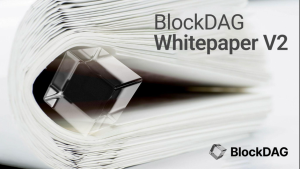FX traders rake in a fortune from carry trade strategy on 2:1 leverage currency ETF
FX trading via a futures exchange with 2:1 leverage and an 8% increase in return year on year? How?!

The global FX ecosystem, whether traders, brokers or institutional providers, has for the most part retained a very separate nature to the futures and listed derivatives businesses, their entire business structures being completely different from each other from origin to end user.
Traders of listed derivatives on Chicago’s giant and highly technologically advanced futures exchanges, CME Group, IntercontinentalExchange and CBOE, with their dedicated retail futures platforms that connect to venues, large portfolios which are as diverse in their asset classes as they are adverse to spot transactions conducted via MetaTrader 4 using aggregated bank liquidity feeds.
Despite ground-up redressing of regulatory structures to ensure that central counterparties process trades and reporting is conducted in a transparent fashion in these post-Dodd Frank and MiFID times of completely redesigned trading infrastructure, the OTC world has not gained any more similarity to the exchange traded futures world. Not one jot.
There are always exceptions of course – and in the case of certain institutional FX traders recently, a new dynamic has emerged in which the ability to capitalize on the spread between record low yields in some developed markets compared to higher yields in other areas. Effectively, taking a global view, especially with regard to the G10 countries, has been instrumental to high gains by using this method.
How it works, and how the profits are gained
Experienced traders have been benefitting from this strategy, which is known as ‘carry trade’ via a currency-based exchange traded fund (ETF) rather than spot transactions.
This particular carry trade, in which investors borrow in Group of 10 (G10) currencies with low interest rates and use the cash to buy assets in higher yielding markets, is set for its largest annual gain since 2012.
One of the key factors that has assisted the profitability by traders by using the carry trade strategy is that various monetary policies in certain regions of the world have reduced rates to very low levels.
James Ong, Senior Macro Strategist at Invesco this week explained to Bloomberg “Central-bank policy is always going to be the number-one driver of our strategy. The ability to acknowledge the valuation and policy dynamics in Japan was the number-one thing that helped us. Diversifying some of our trades away from being dollar trades also helped as well.”
In many cases, investors may implement the carry trade strategy by borrowing on cheap Japanese yen and buying higher yielding New Zealand or Australian dollars, for example.
“Aussie and Kiwi have been moving, despite central banks saying more cuts may be in the pipeline,” Ugo Lancioni, a money manager at Neuberger Berman Group LLC, told Bloomberg. “Capital appreciation has allowed the strategy to perform well” he said.
A very good example of this is Deutsche Bank’s G10 Currency Future Harvest Index.
The very same banks that are restricting credit to prime brokerages and OTC derivatives participants which is driving technological advancement in terms of creating greater prime brokerage relationships, and meanwhile raising the capital that is required to get a prime – 5 years ago, $5 million may have got a prime whereas today it ranges between $25 million to $100 million – are the same banks that are the handlers of most OTC interbank FX in the world and yet are still allowing traders to capitalize via ETFs.
Taking a closer look at the Deutsche Bank G10 Currency Future Harvest Index, it consists of FX futures contracts on specific G10 currencies and is designed to exploit the trend that currencies associated with high interest rates tend to rise in value relative to currencies with low interest rates.
The available currencies on the fund are U.S. dollars, euros, Japanese yen, Canadian dollars, Swiss francs, British pounds, Australian dollars, New Zealand dollars, Norwegian krone and Swedish krona.
This particular index, which is up 5% year to date and almost 9% compared to the previous full year takes a two-to-one leverage (once again marking out the futures industry’s disdain for leverage and one of the reasons why FX traders go OTC), going long currency futures with relatively high yielding rates and taking short positions in currencies with low yielding interest rates. DBV is currently long 33.0% New Zealand dollar, 32.9% Australian dollar and 32.0% Norwegian Krone while short -31.3% Swedish Krona, -31.5% Swiss franc and -31.9% euro.
Photograph: Royal Exchange Buildings, London. Copyright FinanceFeeds









